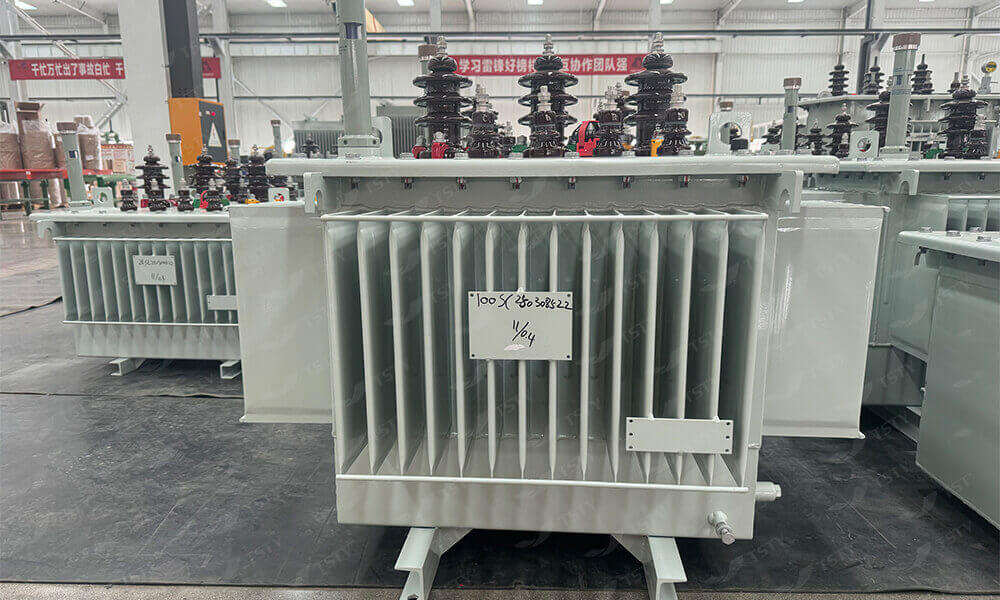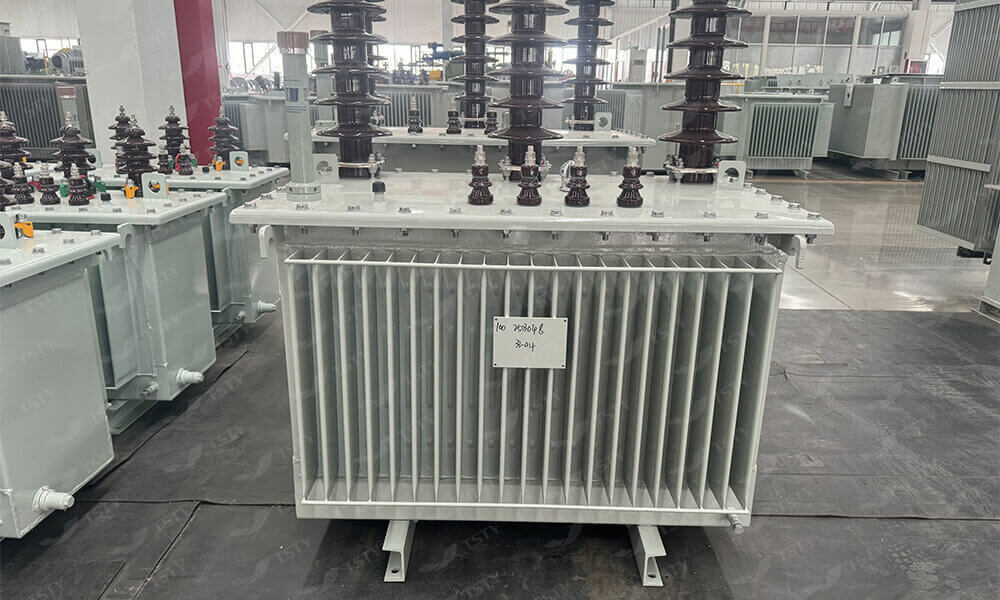TSTY Analysis Transformer Technical Parameter For You
Transformer parameters include the power transformer's model, rated capacity, rated voltage, rated frequency and number of phases, connection group designation, cooling method, operating conditions, impedance voltage, insulation level, and other information. This information helps electricians and purchasers better understand the transformer and make purchasing decisions.
Transformer Technical Parameter Analysis
Below, TSTY explains the meaning of transformer parameters based on a customer's request.
Capacity: 150kVA
Phase: 3phase
Material of Winding: Copper
Primary Voltage: 480V
Secondary Voltage: 120V/208V
Frequency: 60HZ
Vector Group: Delta primary / Wye
grounded secondary, 30° phase shift
Cooling Type: Dry-type
No-oad loss: 500w-700w
Load loss: 2,500w-3,500w
impedance Voltage: 3.5%-5%

1. Capacity: 150kVA
Meaning: Rated capacity refers to the maximum apparent power a transformer can output under rated operating conditions, measured in kilovolt-amperes (kVA).
Interpretation: 150kVA means it can power a mixed load with a total power of 150 kilowatts (kW), including lighting, motors, and equipment. For example, it can support the load of a small to medium-sized factory floor, a small commercial building, or a data center room.
2. Phase: 3 Phase
Meaning: Three-phase.
Interpretation: This refers to a transformer designed for use with a three-phase AC system. This is the standard configuration for powering industrial, commercial, and large buildings, as opposed to the "single-phase" system used to power homes. A three-phase system is more efficient and economical for transmitting the same amount of power.
3. Material of Winding: Copper
Meaning: The winding material is copper.
Interpretation: The transformer's coils (windings) are made of copper conductors. Compared to aluminum windings, copper windings offer the following:
Better conductivity: With the same capacity, they can be smaller and more efficient.
Higher mechanical strength: More resistant to short-circuit current surges, resulting in higher reliability.
Better corrosion resistance: Longer service life.
Higher cost: This is a sign of a high-quality transformer.
4. Primary Voltage: 480V & Secondary Voltage: 120V/208V
Meaning:
Primary Voltage (Input): 480V. This means it connects to a 480V three-phase power line.
Secondary Voltage (Output): 120V/208V. This means it provides two voltages:
208V: This is the line-to-line voltage, used for three-phase equipment (such as large motors and air conditioning units).
120V: This is the line-to-neutral voltage, taken from the phase-to-neutral line of a 208V system, used for single-phase loads such as lighting, outlets, and office equipment.
Explanation: This is a very typical North American standard voltage configuration. The 480V-208V/120V transformer is widely used in commercial buildings, schools, hospitals, and factories to convert higher distribution voltages to lower voltages suitable for equipment.
5. Frequency: 60Hz
Meaning: 60 Hz frequency.
Interpretation: This designates the transformer for use in North American, parts of South American, and parts of the Middle East and Asia (e.g., the United States, Canada, Mexico, Saudi Arabia, and the Philippines). It should never be used in countries with a 50 Hz frequency (e.g., China and most European countries), as this would cause the transformer core to saturate, overheat, and burn out.

6. Vector Group: Delta primary / Wye grounded secondary, 30° phase shift
Meaning: Connection type: The primary is connected in a delta (Δ) configuration, and the secondary is grounded in a star (Y) configuration, with a 30-degree phase difference. This is typically designated Dyn11 (or Dy1 in accordance with US standards).
Explanation: This is an extremely important technical parameter.
Δ/Y combination: This is the most common connection method. The Y connection provides a neutral conductor on the secondary, enabling a 120V output voltage.
Secondary grounding: Ensures system safety and voltage stability.
30° phase difference: This connection effectively suppresses third harmonics, preventing harmonic currents from contaminating the upstream power grid and ensuring power supply quality. It is the preferred choice for industrial applications.
7. Cooling Type: Dry-type
Meaning: Dry cooling.
Explanation: The transformer core and windings are not immersed in insulating oil but are instead cooled directly by air. The windings are typically sealed and cast with a material such as epoxy resin.
Advantages: Fireproof, explosion-proof, pollution-free, maintenance-free, and easy to install (no oil pit or fire protection system required).
Disadvantages: Heat dissipation capacity is inferior to oil-immersed cooling. Typically used indoors or in locations with high environmental safety requirements (such as high-rise buildings, subways, hospitals, and data centers).
8. No-load loss: 500w-700w & Load loss: 2,500w-3,500w
Meaning:
No-load loss: 500-700 watts. This refers to the power consumed by the transformer when the primary is powered (480V) but the secondary is unloaded. This is primarily determined by the core's magnetizing properties (iron losses).
Load loss: 2500-3500 watts. This refers to the losses (copper losses) incurred by current flowing through the copper windings when the transformer's secondary is loaded (150 kVA).
Interpretation: These two parameters are key indicators of a transformer's energy efficiency rating. Lower losses indicate higher efficiency and lower operating electricity costs. This loss range indicates that the transformer's efficiency meets or approaches the US DOE 2016 or EU IE2 standards. Customers typically seek products with lower losses to save on long-term operating costs.
9. Impedance Voltage: 3.5%-5%
Meaning: Impedance voltage percentage, typically around 4%. This refers to the ratio of the applied voltage required to carry the rated current in both the primary and secondary of the transformer when the secondary is short-circuited.
Interpretation: This is a critical design and system parameter.
If the value is too low (e.g., <3%), the short-circuit current will be very high, causing significant damage to the transformer and downstream switchgear.
If the value is too high (e.g., >6%), the output voltage will fluctuate significantly with load changes (poor voltage regulation).
4% is a good balance, effectively limiting short-circuit current while ensuring good voltage stability.
Summary
This customer required a high-quality, general-purpose, industrial-grade dry-type transformer that meets North American market standards. A typical application scenario is a small factory, warehouse, or commercial complex in the United States, drawing power from a 480V grid to power motors (208V), lighting, and outlets (120V).
The above analysis provides an understanding of the customer's overall transformer requirements and project application. This helps the TSTY transformer manufacturer provide an appropriate price quote based on the customer's needs and manufacture a transformer tailored to the project's requirements, minimizing margins.

